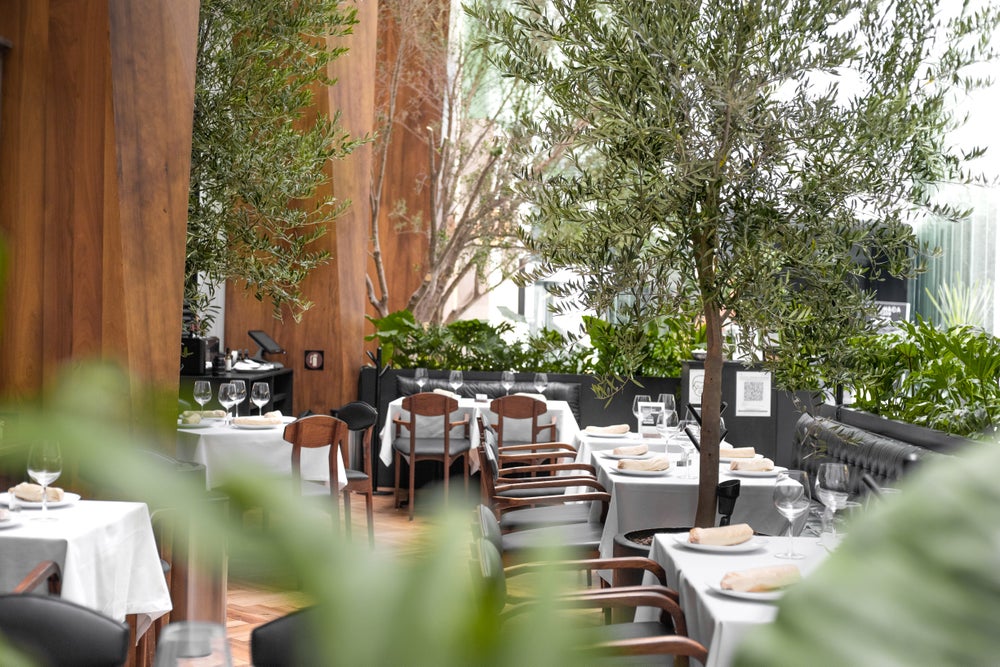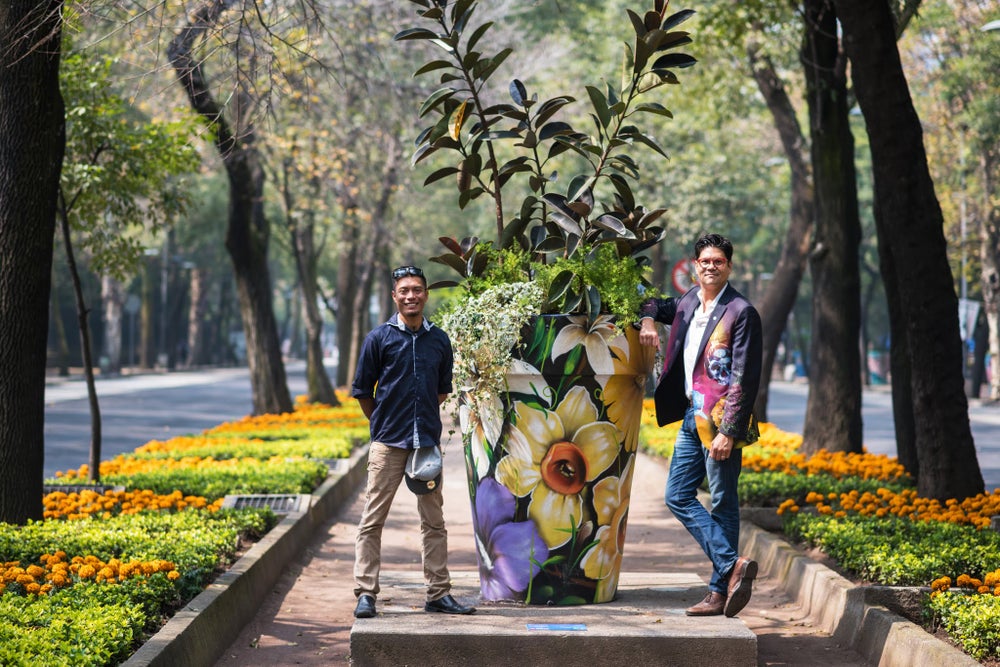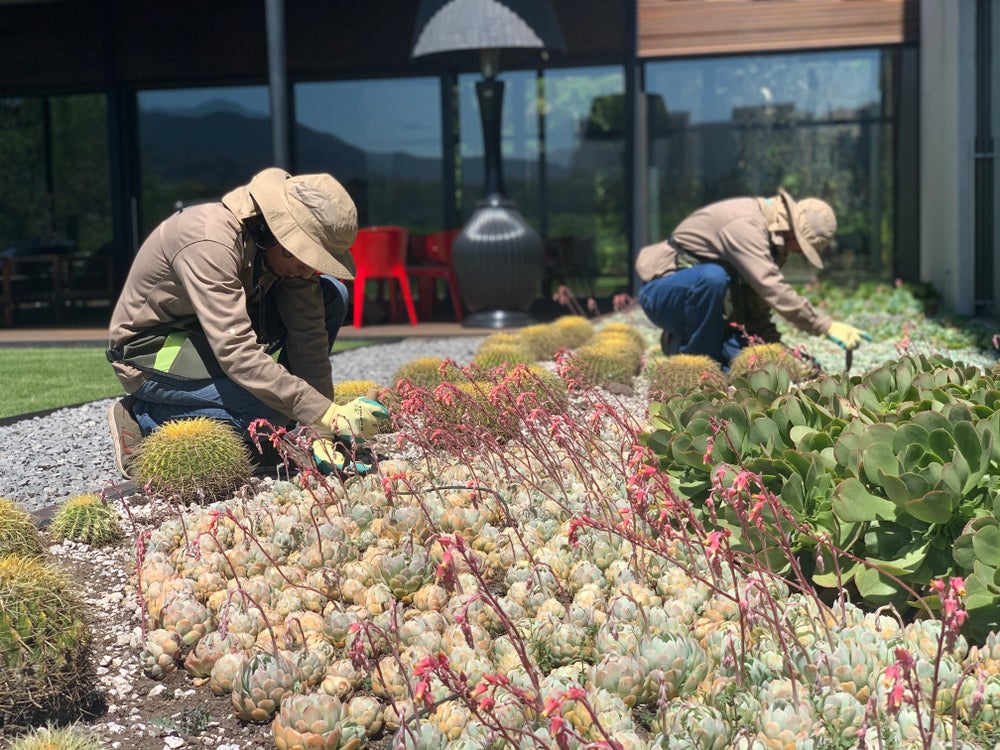March 4, 2021 10 min read
When Diego Gómez-Bilbao was a child, he liked to read the Time Life encyclopedias at home. There were three chapters that I used to review over and over again. He was a little boy who wore glasses who had a hard time distinguishing figures, but those volumes had images that caught his attention: fish, insects and the last one, plants.
In those books little Diego studied the colors, textures and colors of living beings because he could not believe the strange shapes that existed in the world. There was born a love for nature that was driven by his family in an almost predestined way.
His grandparents, of Asian descent, had a house in Cuernavaca and little Diego saw that every day they got up early to take care of their garden. “There I understood that there is no good or bad hand for plants, simply dedication,” he says.
As a young adult, Diego put his passion for plants aside and fully dedicated himself to leading a corporate career as a sales consultant for an Asian technology company. His work led him to live in Venezuela and to travel throughout Latin America. However, it was a somewhat lonely life and he often stayed in hotel restaurants to see the plants and flowerpots on the buildings.
“I asked the people who worked in those places the names of the plants that caught my attention and the companies that made pots and I wrote them down in a little black notebook,” he recalls for Entrepreneur en Español .
Unfortunately, conditions in Caracas changed and for safety reasons, the company Diego worked for took him out of the country. This causes him to start to have a lot of time left over because his clients and his contacts were in the southern cone and on each trip he made to South America he had to connect with several countries at the same time to reduce travel expenses. In the dead times that his schedule allowed, Diego began to look for pots and plants to build a terrace in his house.
“I did the inauguration of my terrace and people began to ask me about the plants and pots that I had. My mother-in-law asked me to get her a plant, then my sister’s friends, my sister-in-law, etc. My house had become a showroom ”, says Gómez-Bilbao.
Diego Gómez-Bilbao / Image: Courtesy Huatan
The day “El Chino” left his office in Montes Urales
It was then that Diego decided to take advantage of the contacts he had made while living and traveling to South America to become a distributor of plants and pots.
“It turned out that the manufacturer of the pots that I had seen in another country was from Guadalajara and all its production was exported because it believed that there was no market for Mexico because at that time, in the 2000s, people only consumed clay pots”, Diego points out. “Now fiberglass is very common, but back then it didn’t exist.”
His surprise was capitalized when in the first two weeks he managed to place 100 pots. He realized that there was a business opportunity where he could have direct contact with the decision maker.
“I came from the corporate world where you had to climb the CEO and a series of executives to close a software sale. In this world the sale was direct. Curiously, the director to whom I sold programming, bought me pots for his house ”.
Diego then opened a small urban landscaping company called Huatan , whose name in Chinese means “Terrace with plants” because he wanted to remember it as “El Chino”, a nickname that Diego had since childhood due to his slightly slanted eyes. He started a business with plants at home.
While his business started up, Diego continued working for the technology company from its offices in Montes Urales. But as the sale of his products progressed and grew, he realized that sooner or later he would have to cut the umbilical cord.

Image: Courtesy Huatan
In his own words, Diego was lucky because at the age of 25 he was earning in dollars, he was paid for a department and he was a sales director for several countries. “I was in a privileged position and it took a lot of work to make the decision,” he says.
The inspiration to make the final decision to venture forth came when he understood that for him the tranquility that a salary could offer him, that stability with that umbilical cord is great, but that dependency was only going to get bigger with time.
When he was considering leaving the company he loved to dedicate himself to Huatan, Diego approached his mentor who was none other than the CEO who had hired him years ago and said “I have this discrepancy in my life. On the one hand I love what I do here and on the other I enjoy selling flowerpots ”. Diego was looking for him to convince him to stay, but his mentor told him “Daniel, chase the plants. If it catches your eye, go after it. But make up your mind and make up your mind now ”.
“I will never forget what he told me, – for something he is my mentor-, because he made me understand that when you are passionate about something, things are given to you and the more you look for them, the more they come to you.”
The landscape architecture office that now dresses Mexico City
After this process of detachment, Diego launched Huatan in all forms in 2006 and has been working for 15 years doing landscaping with the creation, setting, care and conservation of more than 500 sustainable green spaces that allow the reunion with nature.
His office is dedicated to dressing corporate buildings, commercial chains and residential spaces with the design, execution and maintenance of green spaces.
“It has been 15 years since I started, but it was very difficult. There were times when I didn’t even have to pay my children’s tuition. The entrepreneur has to understand that the company comes first before the entrepreneur ”, warns Gómez-Bilbao.
Diego was faced with the reality that he had to learn if he really wanted to succeed in a new but very complicated industry. An industrial engineer by training, he decided to go to work in a nursery to understand the market.
And it is not a small market. According to Statista , the gardening and landscaping industry in the United States is $ 99 billion annually. In other words, a house with a garden spends around $ 500 a year and the market is expected to reach a value of $ 30 trillion by 2030 in the American Union alone.
Huatan is the first Mexican company that hopes to participate in this industry and, why not, – as Gómez-Bilbao says-, partner with Elon Musk and bring Latin plants to Mars.
Among the works that Huatan has done are an intervention by the hand of graffiti artists Orgullo Bravo in the Chapultepec botanical garden during the Flower and Garden Festival of Mexico City, vertical gardens and green interior design for high-end restaurants. range such as Aromas Cotidianos and Blanco Bistro and events such as Millesime.
For the following years, Huatan claims to have a couple of projects on the horizon in the United Arab Emirates and Texas, but Gómez-Bilbao hopes to soon be able to enter California, Florida and Spain.

Image: Courtesy Huatan
Green options for the “new normal”
The work that Huatan does has acquired a new dimension with the sanitary restriction measures due to the COVID-19 pandemic, either because more outdoor spaces are needed in cities to cope with confinement or because urban gardening has acquired greater importance among people seeking to produce organic food.
For example, restaurants that could previously ignore the importance of having open spaces have been forced to adapt previously unused areas to have a place to serve diners and comply with sanitation measures.
“The pandemic took us away from other human beings and from nature,” said Gómez-Bilbao, noting that green areas help offer an extra service to diners by giving them the opportunity to be in contact with plants and natural spaces through green dining experiences.
However, it is not just a trend to cope with the pandemic. Biophilic architecture, one that considers green spaces as a central part of its design, is gaining ground. A very clear example is the new Amazon headquarters (in which the brand wants to invest 5 billion dollars) or the Singapore Jewel Changi Airport.

Image: Courtesy Huatan
On the other hand, Huatan’s mission is to help bring green spaces to cities and for that they also offer two pre-assembled urban gardens so that people can install and plant: One type Greenhouse with a shade and plastic mesh cover that generates its Its own microclimate and a Tutor type, with a structure to help the correct growth of plants and vegetables.
“We are all gardeners,” says Gómez-Bilbao, “All our lives we have had plants on the roofs, bamboos on the desks, spices in the kitchens, well, we have even planted beans in cotton wool. We just have to reconnect with the plants. “



